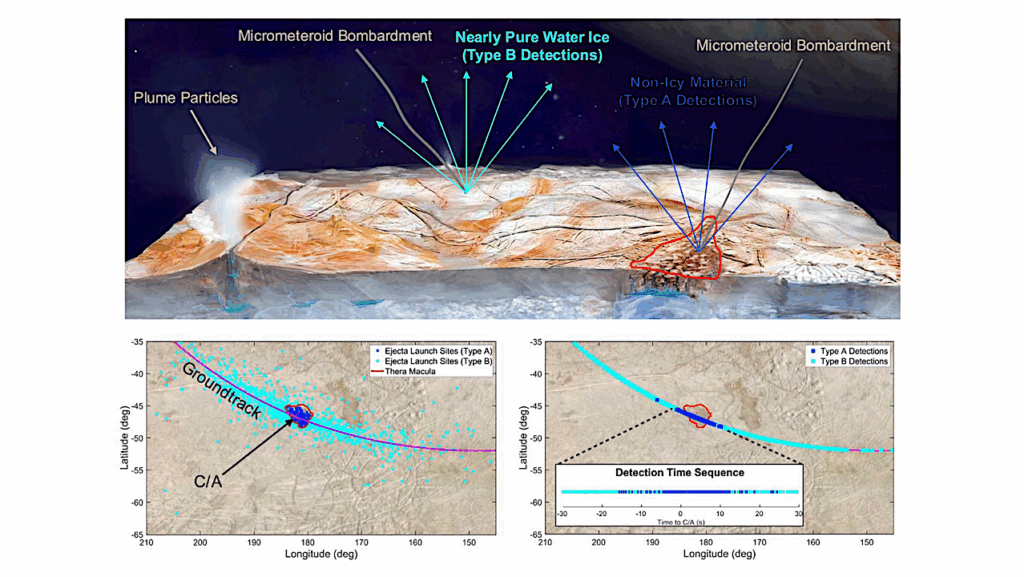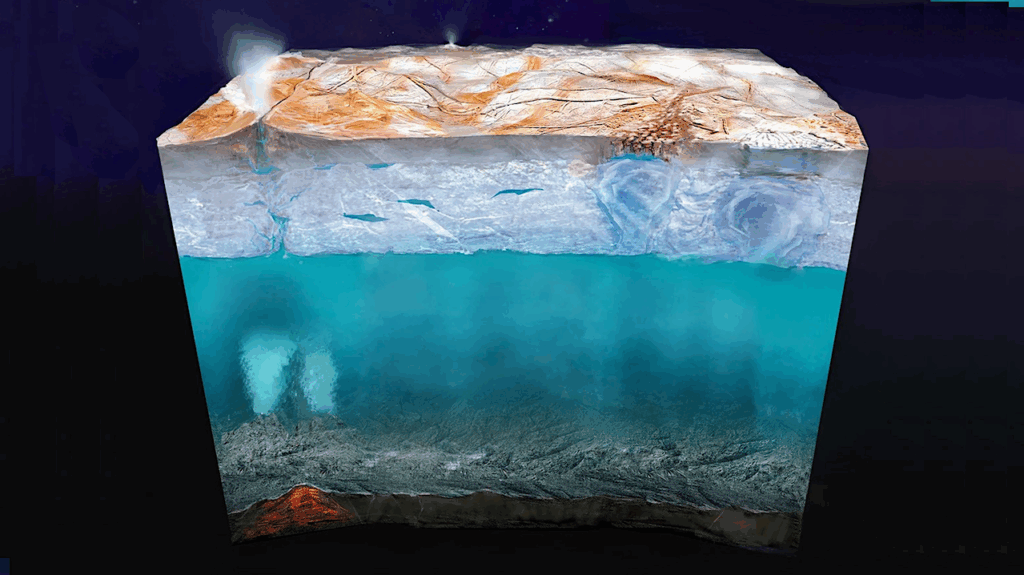Europa's Dynamic Ocean: Taylor Columns, Eddies, Convection, Ice Melting And Salinity

The deep ocean (~100 km) of Europa, Jupiter’s moon, is covered by a thick (tens of km) icy shell, and is one of the most probable places in the solar system to find extraterrestrial life. Yet, its ocean dynamics and its interaction with the ice cover have so far received little attention.
Previous studies suggested that Europa’s ocean is turbulent, yet neglected to take into account the effects of ocean salinity and appropriate boundary conditions for the ocean’s temperature. Here, the ocean dynamics of Europa is studied using global ocean models that include non-hydrostatic effects, a full Coriolis force, consistent top and bottom heating boundary conditions, and including the effects of melting and freezing of ice on salinity. The density is found to be dominated by salinity effects and the ocean is very weakly stratified. The ocean exhibits strong transient vertical convection, eddies, low latitude zonal jets and Taylor columns parallel to Europa’s axis of rotation.
In the equatorial region, the Taylor columns do not intersect the ocean bottom and propagate equatorward, while off the equator, the Taylor columns are static. The meridional oceanic heat transport is intense enough to result in a nearly uniform ice thickness, that is expected to be observable in future missions.
Yosef Ashkenazy, Eli Tziperman
Subjects: Earth and Planetary Astrophysics (astro-ph.EP)
Cite as: arXiv:2006.02242 [astro-ph.EP] (or arXiv:2006.02242v1 [astro-ph.EP] for this version)
Submission history
From: Yosef Ashkenazy
[v1] Wed, 3 Jun 2020 12:51:06 UTC (3,845 KB)
https://arxiv.org/abs/2006.02242
Astrobiology








